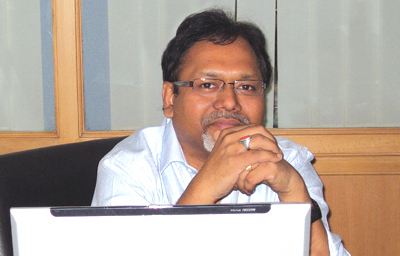INDIAN ARMED FORCES CHIEFS ON
OUR RELENTLESS AND FOCUSED PUBLISHING EFFORTS

SP Guide Publications puts forth a well compiled articulation of issues, pursuits and accomplishments of the Indian Army, over the years

I am confident that SP Guide Publications would continue to inform, inspire and influence.

My compliments to SP Guide Publications for informative and credible reportage on contemporary aerospace issues over the past six decades.
A Word from Editor

Corporate houses and HNIs are thinking luxury, class, speed, and functionality in the air. The business jet manufacturers are customising them and the Indian skies are soon going to have beautiful machines.
In the last fortnight, SP Guide Publications, in association with the Centre for Land Warfare Studies (CLAWS), organised a well-attended seminar on “Network Centric Warfare: In the Indian Context”, wherein the Scientific Adviser to the Defence Minister and the Director General of Defence Research and Development Organisation (DRDO), Dr. V.K. Saraswat underscored the importance of indigenisation in the context of next generation networks, the fear factor being security of imported networks.
The Indian Air Force became the first of the armed forces to get net-centricity with AFNET (Air Force Network), a communication network that offers up to 500 MBPS encrypted, unjammable bandwidth, sufficient for air operations.
While on the subject of indigenisation, Joseph Noronha writes about the growing prospects of general aviation and small commercial aircraft to bear the tag “Made in India” sometime soon. The big industrial houses such as Tatas, Mahindras, Reliance and others are getting into the defence and aerospace sectors and Anand Mahindra, the Vice Chairman of the group, had given a clarion call for Indian companies to collaborate and co-develop, digging into the vast talent pool that exists in India. In line with this thinking, India is looking at a regional transport aircraft and the national committee which is looking into the design feasibility is expected to submit its report soon. As Indian aviation industry grows, India’s own regional jet, if it fructifies at all, will find easy market. Till such time, the two big players, Bombardier and Embraer, have cut out their strategies well as reported by R. Chandrakanth.
The cover story is on high-end business jets and how corporate houses and high networth individuals (HNIs) are thinking luxury, class, speed, and functionality in the air. The business jet manufacturers are customising them and the Indian skies are soon going to have beautiful machines occupying airspace.
Also occupying the skies are some great flying machines in the form of military transport aircraft. Air Marshal (Retd) B.K. Pandey narrates how the induction of the first of the six C-130J Super Hercules aircraft from Lockheed Martin into the Indian Air Force is a turning point in the history of its transport fleet. The new-generation aircraft including the P8I Long Range Maritime Patrol aircraft for the Indian Navy ushers in aircraft from the US after a long spell. The author points out how there is urgent need for infusion of more aircraft with airlift potential.
The tanker battle in the US has come to an end with Boeing bagging the over $3.5 billion for the KC-X Engineering and Manufacturing Development which will deliver 18 aircraft by 2017. Air Commodore (Retd) K.B. Menon takes us through the developments.
On the issue of safety, Honeywell’s latest innovation is set to dramatically reduce the costs and enhance safety associated with weather and Bob Witner of Honeywell gives an insight into the technology behind that. In another industry interview, Sucheta Das Mohapatra talks to A.J. Stevens the head of Cobham, on the business strategies marked out for India.
SP’s Aviation has not only been upfront in knowledgedissemination through the magazines, but also by way of organising conferences. We would appreciate your feedback on our efforts.





